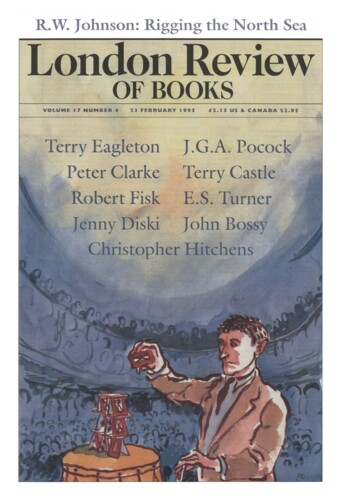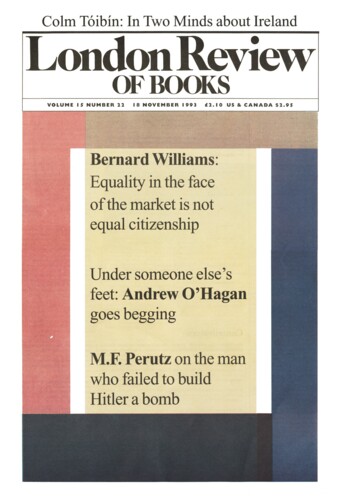Embourgeoisement
Michael Burns, 23 February 1995
Britain was once well known for its cruelty to animals. Bear-baiting, bull-baiting, dog-fighting and cock-fighting were enormously popular amusements; the draught horses of the poor and the race horses of the rich were pushed to limits unimaginable today; vivi-sectionists practised their trade on monkeys and dogs with impunity; and many hunters, ignoring the rules of sportsmanship, imagined no greater enjoyment, as one enthusiast put it, than ‘whole hecatombs of slaughter’.



